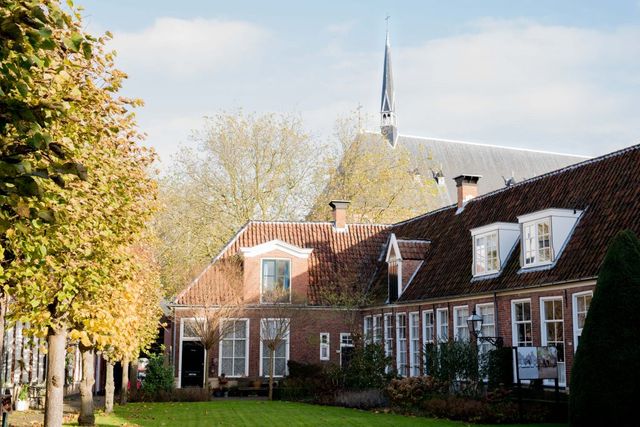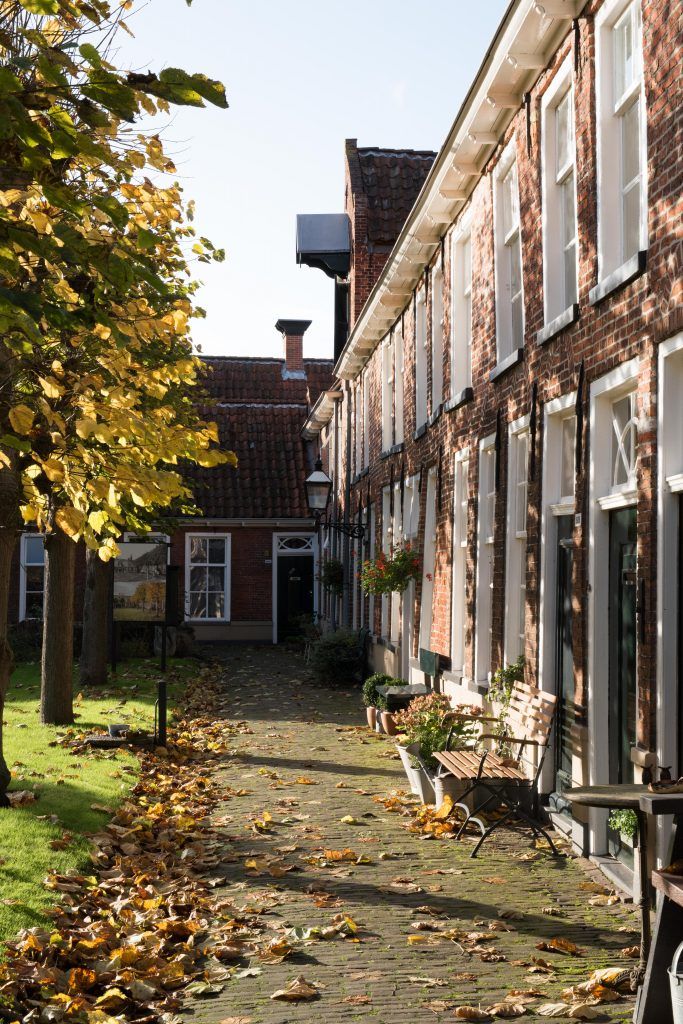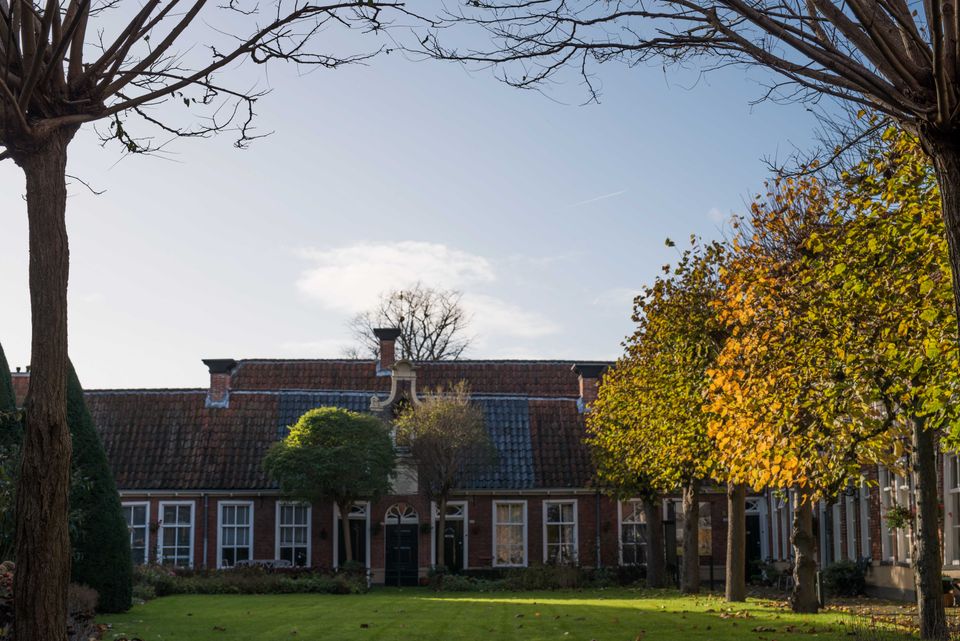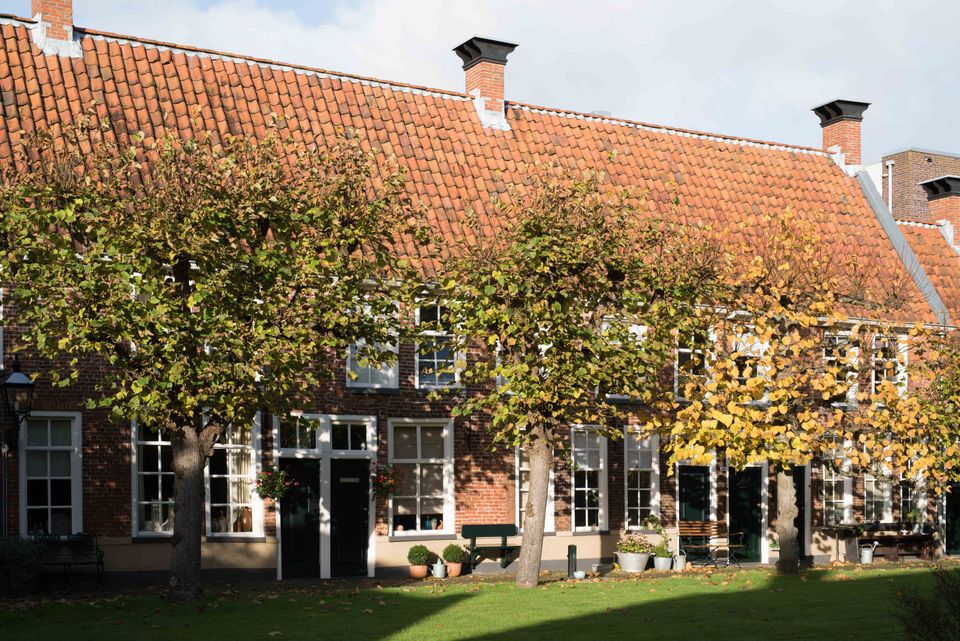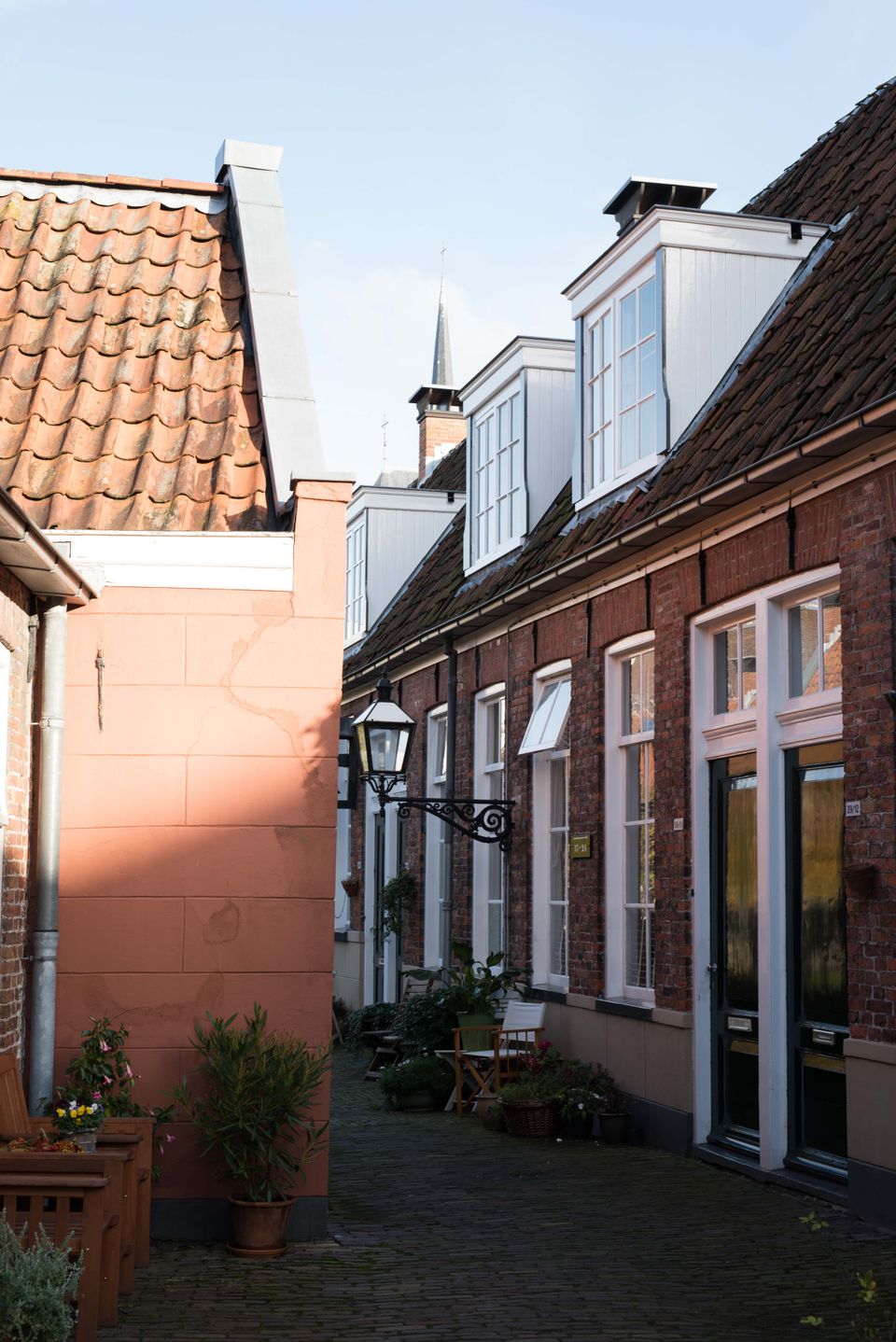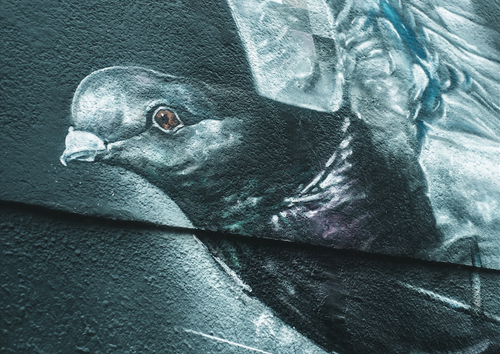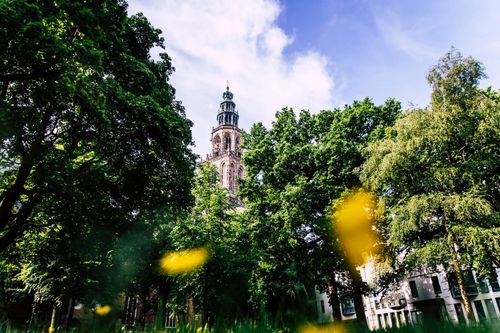
Sint Anthony Gasthuis
The Sint Anthony Gasthuis was founded in 1517 and used to take care of the poor and the sick. The guesthouse was initially inhabited by poor elderly people, but later also by plague sufferers (1608-1644).
Take a look
It is not surprising that these people ended up in this guesthouse. The Towns would rather not have the sick and crazy close to them. The location of the guesthouse, just outside the Oosterpoort on the outskirts of the city, was ideal.
From 1702 (until 1844), the Anthony Gasthuis took over the status of a madhouse from the Peper- and Pelstergasthuis. From that moment, the mentally ill were given shelter here. A lucrative development for the guesthouse, because the patients' money paid a stable income. In addition, the patients formed a tourist attraction on Sunday afternoon, which attracted a lot of attention.
At the front (on the Rademarkt) the hofje …
It is not surprising that these people ended up in this guesthouse. The Towns would rather not have the sick and crazy close to them. The location of the guesthouse, just outside the Oosterpoort on the outskirts of the city, was ideal.
From 1702 (until 1844), the Anthony Gasthuis took over the status of a madhouse from the Peper- and Pelstergasthuis. From that moment, the mentally ill were given shelter here. A lucrative development for the guesthouse, because the patients' money paid a stable income. In addition, the patients formed a tourist attraction on Sunday afternoon, which attracted a lot of attention.
At the front (on the Rademarkt) the hofje is accessible via a seventeenth-century, beautifully sculpted sandstone gate. The back court was realized in 1927 with the construction of a number of houses in a simple Amsterdam style. As seen in the difference in bricks, it is clear that the Sint Anthony Gasthuis has undergone considerable renovations over the centuries.


